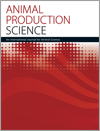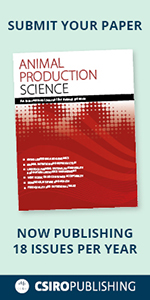Animal Production Science
Volume 64
Number 3 2024
Methane is a potent greenhouse gas and one of the major fermentation products of ruminants. Accurate measurements of methane emissions and the factors modifying them in pasture-fed animals are very scarce because it requires fresh-pasture feeding indoors. This paper describes the effect of pasture composition and what effects animal factors such as physiological stage, age and sex have on methane emissions from cattle.
The use of antibiotics as an additive growth promoter is being prohibited, because it can cause bacterial resistance. Symbiotics are a viable alternative to antibiotics, because they have constituents (probiotics and prebiotics) that modulate the intestinal microbiota, and promote better results in the use of nutrients and health of the birds, and consequently better productive performance.
Previous studies have demonstrated the association of certain phenotypic traits of incoming feeder calves with feedlot production; however, a well-defined classification system does not currently exist for this purpose. We developed a subjective classification system of production potential for incoming feeder calves and demonstrated its ability to predict feedlot growth performance after adjusting for the calf’s starting weight and gender. This classification system opens the way to precision feeding practices in beef feedlots based on the production potential of individual calves.
Lameness remains a critical concern in dairy herds worldwide, exerting detrimental impacts on animal well-being, milk yields, and farm profitability. This study endeavours to comprehensively assess the prevalence of lameness in major tropical Asian countries and identify the primary risk factors via a rigorous meta-analysis. The findings emphasise the prevalence of lameness in dairy herds across tropical Asian nations and highlight the potential for reducing its occurrence through enhanced management practices, particularly in relation to factors such as housing, flooring, hygiene, and animal nutrition.





